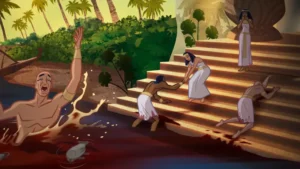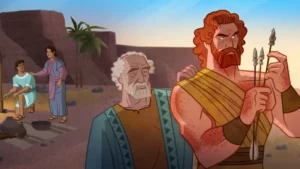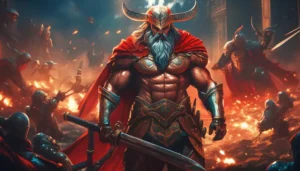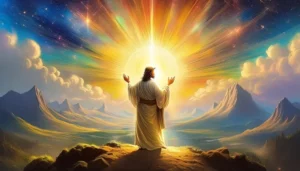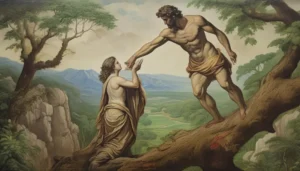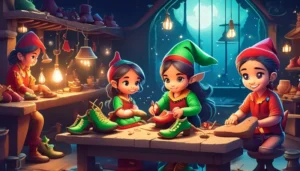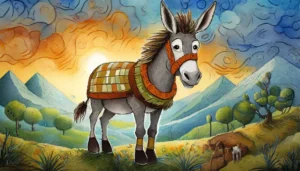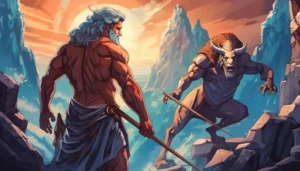
Perseus and the Gorgon: A Classic Greek Myth
The Story of Perseus and the Gorgon Begins Once upon a time, in a land far,
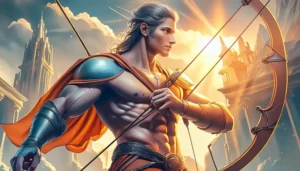
Apollo: The Sun God, Musician, Healer, and Oracle
The Radiant Birth of a God Ancient Greece, a land brimming with myths and legends, gave
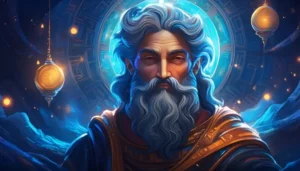
Morpheus: The Greek God of Dreams and Sleep
Entering the Realm of Dreams While Ares embodies the chaos of war, Morpheus reigns over the
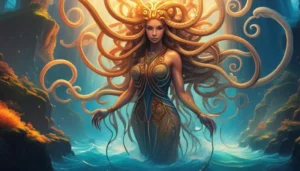
The Story of Medusa and Athena for Kids
Once Upon a Time, a Golden Maiden Named Medusa The Story of Medusa: In the heart
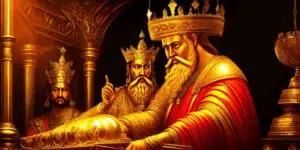
The Story of King Midas
Title: The Story of King Midas Once upon a time, in a magnificent kingdom in ancient
- The Story of Medusa
- The Story of King Midas
- The Story of Perseus and the Gorgon
- The Story of Theseus and the Minotaur
- The Story of Jason and the Golden Fleece
- The Story of Orpheus and Eurydice
- The Story of Daedalus and Icarus
- The Story of Pandora’s Box
- The Story of Hercules and the Twelve Labors
- The Story of Narcissus and Echo
- The Story of Apollo and Daphne
- The Story of Arachne the Weaver
- The Story of Pygmalion and Galatea
- The Story of Demeter and Persephone
- The Story of Phaethon and the Sun Chariot
- The Story of Hades and the Underworld
- The Story of Odysseus and the Trojan War
- The Story of Atalanta and the Golden Apples
- The Story of Bellerophon and Pegasus
- The Story of Eros and Psyche
These Greek mythology stories for kids are full of adventure, heroism, and tragedy, and they can help children develop their imagination and creativity while teaching them valuable lessons about life.
The Pantheon of Greek Gods and Goddesses: Unveiling the Divine Hierarchy
Greek mythology boasts a rich and complex pantheon of gods and goddesses, each with unique powers, personalities, and domains. Understanding these divine figures is key to unlocking the stories, values, and beliefs of ancient Greece.
The Olympians: The Ruling Twelve
The Olympians, residing on Mount Olympus, are the most revered and powerful gods in the Greek pantheon.
- Zeus (King of the Gods): God of the sky, thunder, lightning, law, and order. His symbols include the thunderbolt, eagle, and oak tree.
- Hera (Queen of the Gods): Goddess of marriage, women, family, and childbirth. Her symbols include the peacock, cow, and pomegranate.
- Poseidon (God of the Sea): Ruler of the oceans, earthquakes, and horses. His symbols include the trident, dolphin, and horse.
- Demeter (Goddess of Agriculture): Goddess of grain, harvest, fertility, and sacred law. Her symbols include wheat, poppies, and the cornucopia.
- Athena (Goddess of Wisdom and War): Goddess of wisdom, handicraft, and warfare. Her symbols include the owl, olive tree, and Aegis (a shield with Medusa’s head).
- Apollo (God of Light, Music, and Prophecy): God of the sun, music, poetry, healing, and prophecy. His symbols include the lyre, laurel wreath, and bow and arrow.
- Artemis (Goddess of the Hunt and Wilderness): Goddess of the hunt, wild animals, wilderness, childbirth, and protectress of girls. Her symbols include the bow and arrow, moon, and deer.
- Ares (God of War): God of war, violence, and bloodshed. His symbols include the spear, helmet, and dog.
- Aphrodite (Goddess of Love and Beauty): Goddess of love, beauty, pleasure, and procreation. Her symbols include the dove, swan, rose, and myrtle.
- Hephaestus (God of Fire and Forge): God of fire, metalworking, sculpture, and forging. His symbols include the hammer, anvil, and tongs.
- Hestia (Goddess of Hearth and Home): Goddess of the hearth, home, and family. Her symbols include the hearth fire and kettle.
- Hermes (Messenger of the Gods): God of trade, thieves, travelers, sports, athletes, and border crossings, guide to the Underworld. His symbols include the caduceus (staff with two snakes), winged sandals, and winged cap.
Other Major Deities:
- Hades (God of the Underworld): Ruler of the Underworld and the dead. His symbols include the Cerberus (three-headed dog), bident (two-pronged spear), and cypress tree.
- Dionysus (God of Wine and Festivity): God of wine, festivity, theatre, religion, and madness. His symbols include grapes, ivy, and the thyrsus (a staff tipped with a pine cone).
Primordial Deities:
Before the Olympians, there were the primordial deities, representing the fundamental forces and elements of the universe.
- Chaos: The origin of everything, representing the void before creation.
- Gaia (Mother Earth): The Earth goddess, mother of the Titans and many other beings.
- Uranus (Sky): The sky god, father of the Titans and husband of Gaia.
- Pontus (Sea): The primordial sea god, representing the deep waters.
- Tartarus: The abyss below the Underworld, a place of punishment and torment.
The Titans:
The Titans were the children of Gaia and Uranus, a powerful race of deities who ruled before the Olympians. Notable Titans include Kronos (father of Zeus) and Rhea (mother of Zeus).
Additional Figures:
Greek mythology also includes a multitude of other gods, goddesses, demigods, heroes, and creatures, each with their own unique roles and stories. Some notable figures include:
- Heracles (Hercules): The greatest Greek hero, known for his strength and twelve labors.
- Persephone: Queen of the Underworld and daughter of Demeter.
- Pan: God of the wild, shepherds, and flocks.
- The Fates: Three goddesses who control the thread of life (Clotho, Lachesis, and Atropos).
- The Furies: Goddesses of vengeance and retribution.
Conclusion
This is just a glimpse into the vast and captivating world of Greek mythology. By exploring the stories and attributes of these gods and goddesses, you can gain a deeper understanding of ancient Greek culture, beliefs, and values.
The Titans and Their Downfall: A Cosmic Struggle for Power
In the vast tapestry of Greek mythology, the Titans loom large as primordial forces that shaped the universe and clashed with their Olympian descendants in a war that would determine the fate of the cosmos.
Origins of the Universe and the Reign of the Titans:
Greek mythology envisions a universe born from Chaos, a primordial void. From Chaos emerged Gaia (Earth) and Uranus (Sky), who united to give birth to the first generation of divine beings – the Titans. These powerful entities embodied fundamental aspects of the natural world:
- Oceanus: The river that encircled the Earth.
- Coeus: The Titan of intellect and inquiry.
- Crius: The Titan of constellations and the heavenly axis.
- Hyperion: The Titan of light and celestial fire.
- Iapetus: The Titan of mortality and craftsmanship.
- Cronus: The cunning leader of the Titans, associated with time and harvest.
- Thea: The Titaness of sight and radiant light.
- Rhea: The Titaness of motherhood and fertility.
- Themis: The Titaness of divine law and order.
- Mnemosyne: The Titaness of memory and remembrance.
- Phoebe: The Titaness of the moon and prophecy.
- Tethys: The Titaness of freshwater and nursing.
The Titans, under the leadership of Cronus, ruled during a golden age of peace and prosperity. However, their reign was marked by a prophecy foretelling Cronus’s overthrow by one of his children.
The Rise of the Olympians and the Titanomachy:
Fearing the prophecy, Cronus devoured each of his children as they were born. However, his wife Rhea, with the help of Gaia, saved their youngest son, Zeus. Zeus was raised in secret and, upon reaching adulthood, challenged his father for the throne. This sparked the Titanomachy, a cataclysmic ten-year war between the Titans and the Olympians (Zeus and his siblings).
The Olympians, aided by the Cyclopes (who forged Zeus’s thunderbolts) and the Hecatonchires (hundred-handed giants), eventually triumphed over the Titans. The defeated Titans were imprisoned in Tartarus, a deep abyss in the Underworld. However, some Titans, like Prometheus (who later gifted fire to humanity), remained free and played significant roles in subsequent myths.
The Significance of Kronos and Rhea:
Kronos and Rhea, as the parents of the Olympians, occupy a central position in the Titan myth. Kronos’s fear and cruelty led to his downfall, while Rhea’s cunning and protective instincts ensured the survival of Zeus. Their story highlights the themes of generational conflict, fate, and the cyclical nature of power.
Legacy of the Titans:
The Titans, though overthrown, left an enduring legacy in Greek mythology. Their names continue to resonate in various cultural references, and their stories serve as cautionary tales about the dangers of unchecked power and the importance of generational change.
The Titanomachy, as a foundational myth, establishes the dominance of the Olympians and the subsequent rise of Greek civilization. It also explores complex themes of rebellion, ambition, and the struggle for control over the natural world. The Titans’ story remains a powerful reminder of the forces that shaped the cosmos and the ongoing tension between order and chaos.
The Underworld and Its Inhabitants: A Journey into the Realm of Shadows
The Greek Underworld, also known as Hades, is a realm shrouded in mystery and intrigue. It’s a place where souls journey after death, where darkness reigns, and where gods and creatures both fearsome and fascinating reside.
Hades: The Ruler of the Underworld
Hades, the elder brother of Zeus and Poseidon, is the enigmatic and often misunderstood ruler of the Underworld. Though associated with death, he is not seen as evil but rather as a necessary force maintaining the balance of life and death. Hades is depicted as stern and unyielding, yet just in his judgments of the souls that enter his domain. His symbols include the bident (a two-pronged spear), the Helm of Darkness, and the three-headed dog Cerberus.
The Rivers of the Underworld
The Underworld is traversed by five rivers, each with symbolic significance:
- Acheron (river of woe): The river of sadness that all souls must cross.
- Cocytus (river of wailing): The river of lamentation and mourning.
- Lethe (river of forgetfulness): Drinking from this river erases memories of past lives.
- Phlegethon (river of fire): The river of flames that burns the wicked.
- Styx (river of hate): The river by which oaths are sworn, even by the gods.
Notable Inhabitants of the Underworld
- Cerberus: The monstrous three-headed dog that guards the entrance to the Underworld, preventing the dead from leaving and the living from entering.
- Charon: The ferryman who transports souls across the river Styx. Payment is required in the form of a coin placed in the mouth of the deceased.
- The Furies (Erinyes): Three vengeful goddesses who punish those who commit crimes, especially those against family. They are Alecto (endless anger), Megaera (great jealousy), and Tisiphone (vengeful destruction).
- Persephone: The queen of the Underworld and daughter of Demeter. Her abduction by Hades is a central myth explaining the seasons.
- The Judges of the Dead: Minos, Rhadamanthys, and Aeacus, who determine the fate of souls based on their deeds in life.
Places within the Underworld
The Underworld is not a single, homogenous place, but rather contains different regions:
- Elysium: The paradise reserved for heroes and the righteous.
- Asphodel Meadows: A neutral place for ordinary souls.
- Tartarus: The deepest and darkest part of the Underworld, a prison for the most wicked, where Titans and other monstrous figures are confined.
The Underworld in Myth and Culture
The Greek Underworld has been a source of inspiration for countless stories, poems, and artworks. Its imagery has permeated various cultures and continues to fascinate and intrigue us today. The concept of the Underworld raises questions about the afterlife, morality, and the nature of the human soul.
In conclusion:
The Greek Underworld is a realm of shadows, filled with fascinating characters and evocative landscapes. By delving into its depths and exploring its inhabitants, we gain a deeper understanding of ancient Greek beliefs about death, the afterlife, and the intricate workings of the universe.
Greek Mythology in Popular Culture: The Echoes of Olympus
The stories of gods, heroes, monsters, and epic journeys from ancient Greece continue to reverberate throughout modern culture. The timeless themes of love, loss, heroism, betrayal, and the eternal struggle between good and evil found in Greek mythology continue to captivate and inspire creators across various mediums.
Movies and Television:
Greek mythology has been a wellspring of inspiration for filmmakers and television producers for decades. Some notable examples include:
- Clash of the Titans (1981 and 2010): Retelling the story of Perseus and his quest to save Andromeda from the Kraken.
- Troy (2004): A historical epic loosely based on Homer’s Iliad, depicting the Trojan War.
- Wonder Woman (2017): The origin story of the Amazonian princess Diana, drawing heavily on Greek mythological figures and themes.
- Percy Jackson & the Olympians (film series): Based on the popular book series, following the adventures of a demigod son of Poseidon.
- Immortals (2011): A visually stunning action film incorporating elements of Greek mythology.
Books and Literature:
Countless authors have drawn inspiration from Greek mythology, adapting and reimagining its stories for modern audiences. Examples include:
- Madeline Miller’s “Circe” and “The Song of Achilles”: Novels that retell the stories of Circe and Achilles, respectively, from fresh perspectives.
- Rick Riordan’s “Percy Jackson & the Olympians” series: A wildly popular series of young adult novels that reimagine Greek gods and heroes in the modern world.
- Margaret Atwood’s “The Penelopiad”: A novel told from the perspective of Penelope, Odysseus’s wife, offering a unique perspective on the classic tale.
Video Games:
Greek mythology has found a natural home in the world of video games, where epic narratives and fantastical creatures thrive. Some notable examples include:
- God of War franchise: A series of action-adventure games following the Spartan warrior Kratos as he battles figures from Greek mythology.
- Assassin’s Creed Odyssey: An open-world RPG set in ancient Greece, incorporating historical figures and mythological elements.
- Hades: An acclaimed roguelike game that reimagines the Underworld and its inhabitants with stunning visuals and compelling gameplay.
- Fortnite: The popular battle royale game has featured skins and events inspired by Greek mythology, such as the inclusion of Kratos and other characters.
Art and Sculpture:
Greek mythology has been a rich source of inspiration for artists throughout history. From classical sculptures like the Venus de Milo and the Winged Victory of Samothrace to Renaissance masterpieces like Botticelli’s “Birth of Venus,” artists have continually depicted Greek gods, heroes, and myths in various mediums.
Language and Expressions:
Many words and expressions in our everyday language have roots in Greek mythology. For example, the term “narcissistic” comes from the myth of Narcissus, who fell in love with his reflection. We also have expressions like “Achilles’ heel” (a vulnerability) and “Pandora’s box” (a source of unforeseen troubles), derived from well-known myths.
The Enduring Appeal of Greek Mythology:
The enduring appeal of Greek mythology lies in its ability to explore universal themes that resonate with people across cultures and time periods. The stories of gods and heroes struggling with love, loss, power, and mortality continue to captivate and inspire us.
By weaving these ancient myths into modern narratives, creators tap into a shared cultural heritage and create works that resonate deeply with audiences. The echoes of Olympus continue to ring through our movies, books, games, art, and language, reminding us of the power of storytelling and the timeless appeal of ancient myths.

